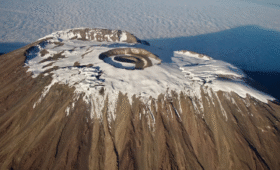Tanzania Tribal Map: Understand the Diversity
Explore the Cultural Mosaic That Makes Tanzania Unique
Tanzania is not just known for its wildlife and landscapes, it is also home to over 120 distinct tribes, each with its own language, customs, music, beliefs, and way of life. From the nomadic Maasai of the savannah to the coastal Swahili communities of Zanzibar, this beautiful East African nation is a living map of cultures and traditions.
At Mandari Travel, we help you go beyond the map and into the heart of real communities, offering authentic cultural experiences that highlight Tanzania’s incredible diversity.
What Is the Tanzania Tribal Map?
The Tanzania tribal map illustrates the major indigenous ethnic groups distributed across the country’s regions. While modern Tanzania is a united nation, each group continues to preserve unique languages, social structures, and traditional practices.
Here’s a look at some of the most prominent tribes and where they are located:
Northern Highlands – The Chagga and Maasai
- Chagga (Kilimanjaro region): Skilled farmers, known for their banana and coffee cultivation and underground defense tunnels (Chagga Caves).
- Maasai (Arusha & Manyara): Semi-nomadic pastoralists famous for their dress, jumping dances, and strong warrior culture.
Central Tanzania – The Gogo and Iraqw
- Gogo (Dodoma): Traditionally cattle herders and millet farmers, known for oral storytelling.
- Iraqw (Mbulu Highlands): A Cushitic group with a rich farming culture and vibrant traditional music.
Western Regions – The Sukuma and Haya
- Sukuma (around Lake Victoria): Tanzania’s largest tribe, known for dance, drumming, and traditional healing.
- Haya (Kagera): Famous for iron-smelting history and clan-based social organization.
Southern Highlands – The Hehe and Bena
- Hehe (Iringa): Proud warrior tribe known for resisting German colonial forces under Chief Mkwawa.
- Bena (Njombe): Skilled in wood carving and oral poetry, with strong agricultural roots.
Eastern & Coastal Regions – The Swahili and Zaramo
- Swahili (Zanzibar, Dar es Salaam): A coastal people shaped by centuries of Indian Ocean trade and Islamic influence.
- Zaramo (Coastal Dar): Known for unique ceremonies, woodcraft, and ritual drumming.
Why Understanding Tribal Diversity Matters
Learning about the tribal map of Tanzania allows travelers to:
Gain a deeper appreciation for the cultural richness beyond the safari experience
Interact with communities in a respectful, informed way
Recognize the ongoing importance of tradition, even in modern life
Support cultural preservation through responsible tourism
Explore Tribal Cultures with Mandari Travel
We offer tailor-made cultural tours that highlight tribal traditions through:
- Homestays in rural villages
- Drumming, dance, and storytelling sessions
- Artisan workshops (e.g., Maasai beadwork or Chagga coffee roasting)
- Traditional cooking experiences
- Visits to museums and heritage centers
Each tour is led by local guides who share their own tribe’s stories and way of life.
Want to Dive Deeper? Let Us Guide You
Travel is more meaningful when you understand the people. Whether you’re a curious visitor, researcher, or student group, Mandari Travel will help you explore Tanzania’s tribal diversity with respect, accuracy, and authenticity.
Email: info@mandaritravel.com.com
Call or WhatsApp: +255 750 900 811
Or simply fill out the form below to request a quote or personalized tribal heritage itinerary.




